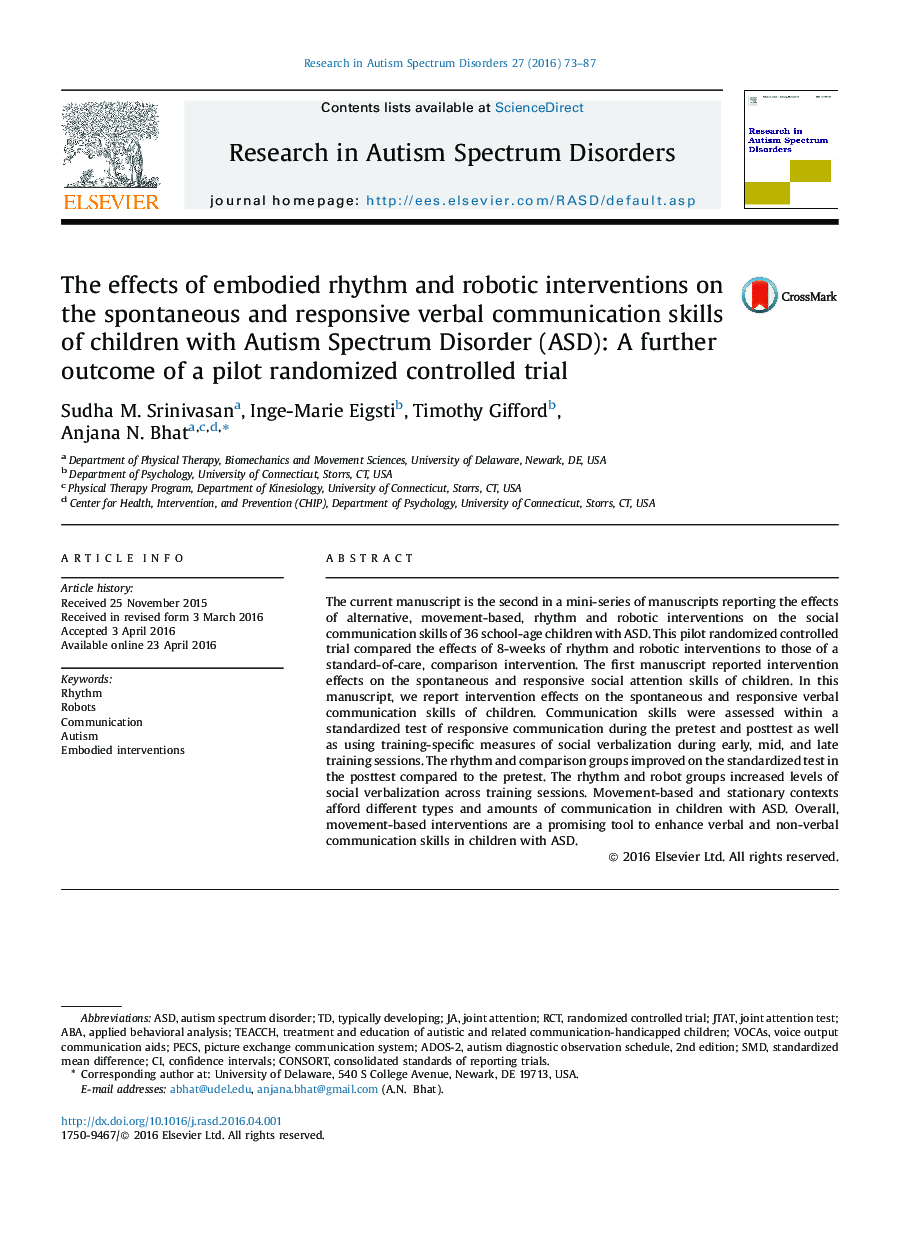| کد مقاله | کد نشریه | سال انتشار | مقاله انگلیسی | نسخه تمام متن |
|---|---|---|---|---|
| 369924 | 621827 | 2016 | 15 صفحه PDF | دانلود رایگان |
• Assessment of effects of movement interventions on communication skills in autism.
• Rhythm and robot groups improved social verbalization with training.
• Standard-of-care contexts afford responsive communication skills.
• Whole body rhythmic activities promote spontaneous initiation of communication.
• Movement interventions can promote verbal and non-verbal communication in children with autism.
The current manuscript is the second in a mini-series of manuscripts reporting the effects of alternative, movement-based, rhythm and robotic interventions on the social communication skills of 36 school-age children with ASD. This pilot randomized controlled trial compared the effects of 8-weeks of rhythm and robotic interventions to those of a standard-of-care, comparison intervention. The first manuscript reported intervention effects on the spontaneous and responsive social attention skills of children. In this manuscript, we report intervention effects on the spontaneous and responsive verbal communication skills of children. Communication skills were assessed within a standardized test of responsive communication during the pretest and posttest as well as using training-specific measures of social verbalization during early, mid, and late training sessions. The rhythm and comparison groups improved on the standardized test in the posttest compared to the pretest. The rhythm and robot groups increased levels of social verbalization across training sessions. Movement-based and stationary contexts afford different types and amounts of communication in children with ASD. Overall, movement-based interventions are a promising tool to enhance verbal and non-verbal communication skills in children with ASD.
Journal: Research in Autism Spectrum Disorders - Volume 27, July 2016, Pages 73–87
